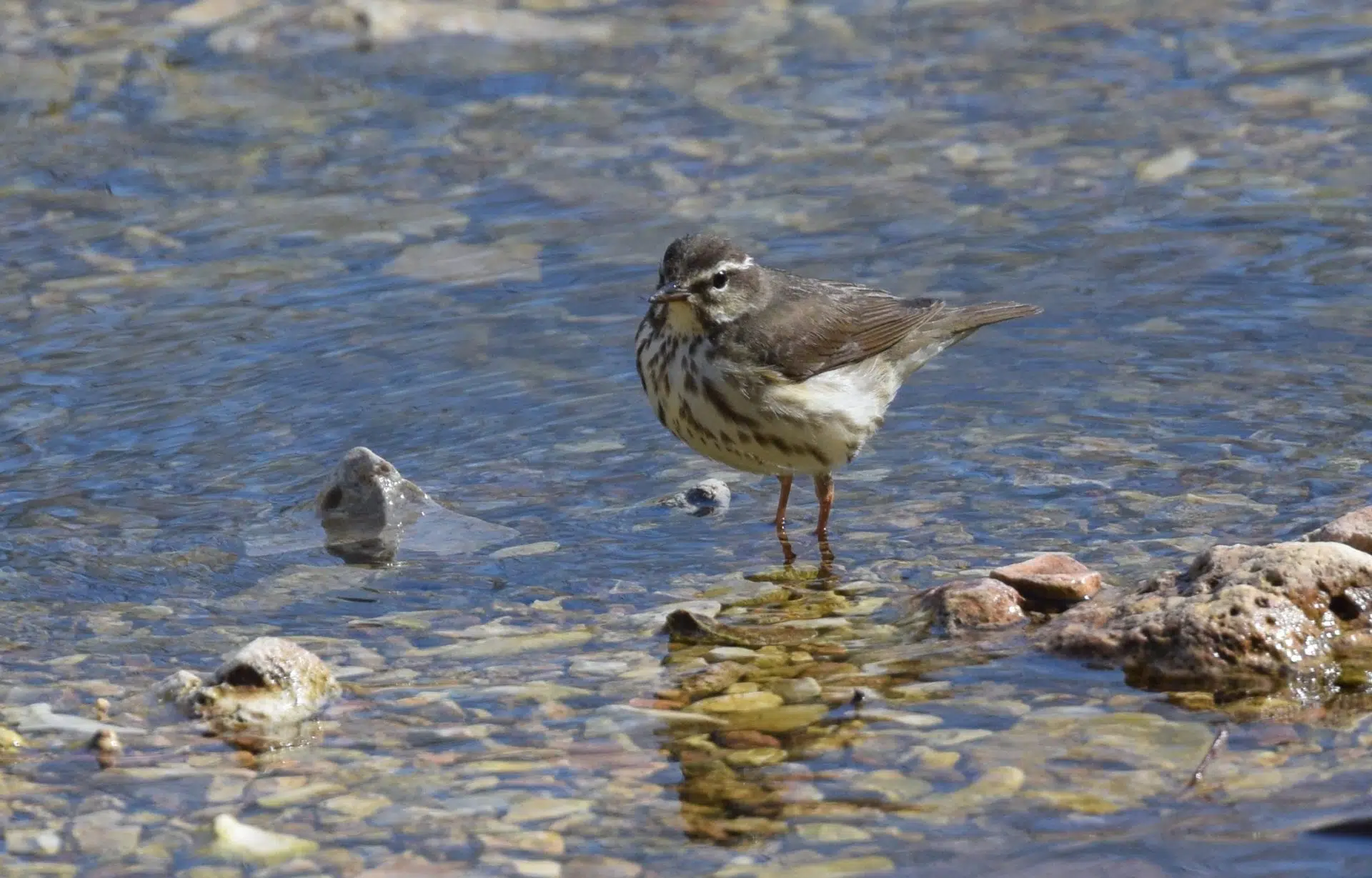Nature Profile
Birds
Louisiana Waterthrush
Seiurus motacilla

Voice: three- four clear, whistled introductory notes that are a slurred upward, followed by a variable complex jumble of short, rapidly twitters. Call is brisk chick or chink.
Louisiana waterthrushes are almost exclusively found in mature riparian forests. They are among the earliest long-distance, neotropical migrant warblers to arrive back to Ohio in the spring; typically arriving by early to mid-April. Their riparian habitat consists of steep-sided ravines with fast flowing waters which include rocky beds and many riffles.
Louisiana waterthrushes are ground dwellers. They walk slowly, bobbing their body and tails around streams. They are extremely fast feeders, with up to 10 or more feeding maneuvers per minute. Their quick-jabbing motion allows them to catch aquatic insects, invertebrates, and occasionally small frogs and fish. They have an interesting habit of also foraging under floating debris such as leaves. They have been observed grasping dead leaves in the water, and pulling it upward to expose hidden preys. Occasionally, Louisiana waterthrushes may fly upward to catch insects. They also may hover, hawk and gleans prey from vegetation too high to be reached from a standing position.
Unlike many warblers, male Louisiana waterthrushes do not sing on their wintering grounds. When they arrive on breeding territory males sing vigorously to attract a mate. Once established, the pair chooses a nesting sight in small hollow or cavity near the root base of upturned trees, or under a fallen log. Nest construction begins about the time of spring leaf-out, with both sexes building the nest. Nests are cup shape made of leaves, bark strips, twigs, and lined with fine plant stems, rootlets, hair, and moss.
Females lay 4-6 white to creamy-white eggs with reddish brown speckles, spots, or blotches which are usually concentrated at large end but sometimes scattered evenly over entire egg. Eggs are incubated by females for 14-16 days. Males do not feed females, but accompanies her when foraging. Young are fed by both parents. Young leave the nest 10 days after hatching. Fledglings can fly six days after leaving nest, and begin feeding on their own at 7 days. Adults only have one brood and depart breeding territories by July.
Louisiana waterthrushes are of high conservation importance, because of their dependence on healthy forest streams ecosystems both on its breeding and wintering grounds. Local populations are very sensitive to changes in habitat quality and quantity. Extensive deforestation on the wintering grounds is likely a serious problem in certain areas. The Louisiana Waterthrush is ranked as a species in need of monitoring attention in the southern United States by the US Fish & Wildlife Service, and as a species of concern by Partners in Flight in the south.
Photo Credit: Andy Reago & Chrissy McClarren, CC BY 2.0 , via Wikimedia Commons
Best Location to View: Pierson’s Creek Loop
Color: Brown
Range: Mexico, North America, South America
Size: Small
Wingspan: Small




